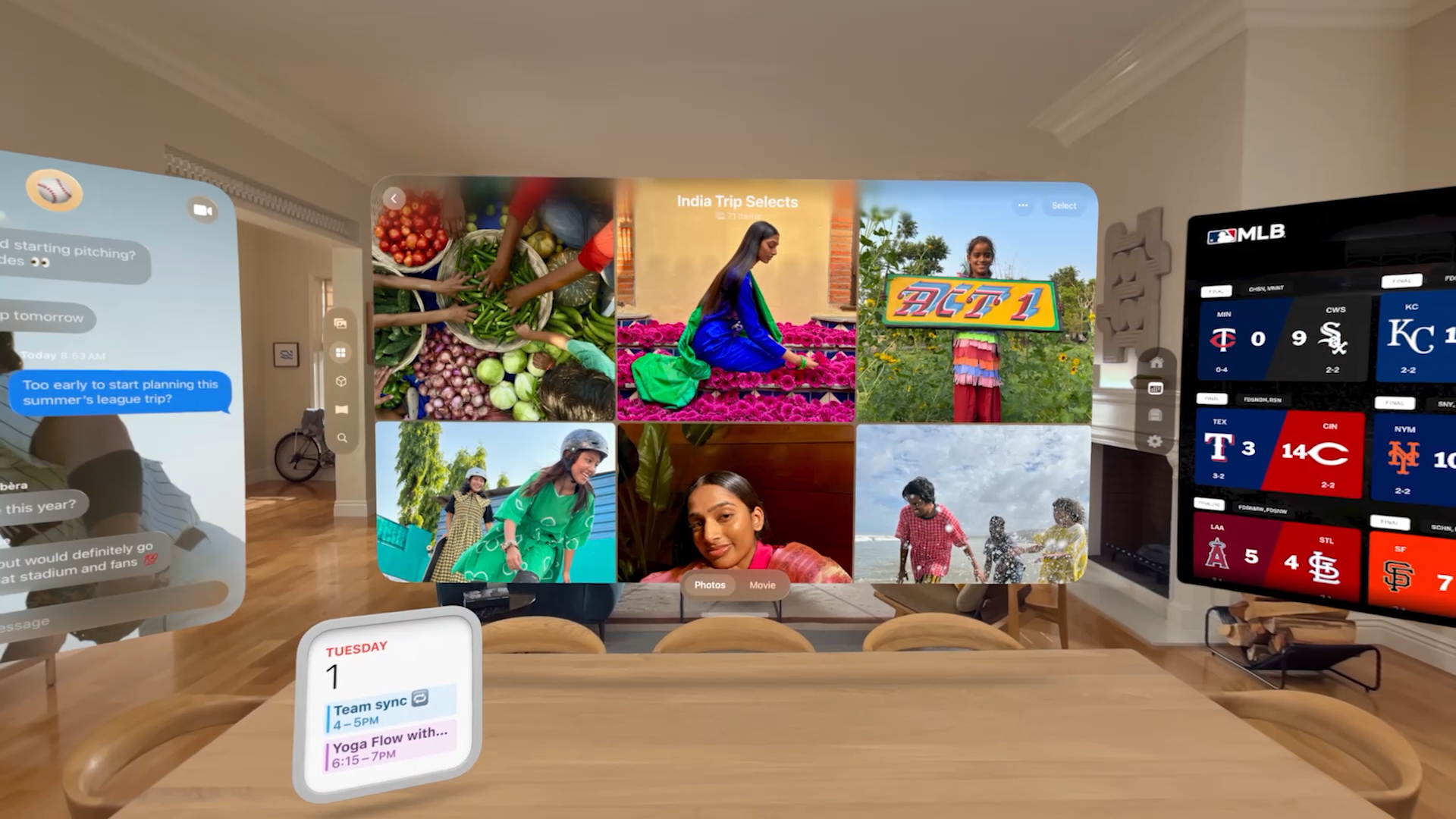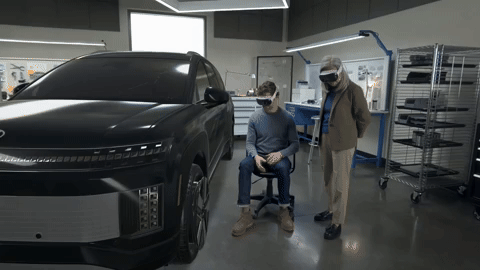visionOS 26 hands-on — Apple is showing us why the wait for Apple Glasses will be totally worth it

Apple famously does not talk about future products (delayed Siri notwithstanding), but I couldn't help but look ahead as I tried out all of the new features in visionOS 26 for the first time, which is in developer beta now and arriving this fall.
Yes, the new visionOS will launch on the Vision Pro, and as far as we know there's no new spatial computing hardware coming from Apple this year — although there's rumors of a lighter Vision Air headset on the way.
But as I stared at a panoramic photo widget of Japan and Mt Fuji on the wall in front of me — just like a window — I was thinking a lot more about the implications of visionOS 26 for the rumored Apple Glasses.
Spatial widgets that sink into your walls (and remember where you put them)

During one visionOS 26 demo, I was able to play around with the new spatial widgets, which I think have huge implications for a pair of Apple smart glasses.
I opened the new Widgets app in visionOS and then placed a clock on the wall I was staring at, and I could adjust the color and width of the frame. But with another tap I could then make it appear like that widget was literally sunken into the wall, adding an almost freaky sense of depth.

I also walked from one room to another to demonstrate the fact that you can pin widgets and make their locations persistent. So, for example, your music widget could always be in the same spot. And as I walked up to that widget I could see more info on the Lady Gaga album and start playing my music.
All of this is cool if you happen to have $3,500 to burn on a Vision Pro and don't mind wearing a 1.3-pound headset all day. But I think use cases like this get much more interesting when you can shrink the technology down to work on a pair of smart glasses.
Get instant access to breaking news, the hottest reviews, great deals and helpful tips.
3D photos somehow just got better

The Vision Pro could turn 2D photos into 3D before, but it was doing so by displaying information differently to your left eye and right eye.
The new Spatial scenes feature works differently and quickly turns your flat pics into something much more immersive, thanks to generative AI.
In one image I could literally peek behind a rocky outcropping and see more of a body of water that wasn't even there in the original photo. Apple is using a new AI algorithm that leverages computational depth to crate multiple perspectives from your 2D photos.
The result is that it feels like you can get various perspectives of the images just by leaning into the shot and tilting your head.
Again, I can see slipping on a pair of glasses to get this effect, but I don't know if the payoff is worthwhile if we're talking about a bulky headset.
360 videos taken to the next level

Easily the most jaw-dropping moment of my visionOS 26 demo was being able to see someone paraskiing, thanks to 8K footage captured by an Insta360 3D video camera.
The point of this demo was to show that visionOS 26 supports native playback of 180-degree, 360-degree and wide FOV content from 3D cameras. Apple's new Apple Projected Media Profile takes these shots and remap them into a sphere around you.
As the paraskiier essentially floated down a mountain and screamed his head off, I was both excited to live vicariously through him and relieved I was not him.
Honestly, I think this format is fine for the Vision Pro and might be tough to pull off in Apple Glasses, as they would have to give you a very wide field of view. But the demo was still impressive.
Shared AR experiences

There was only moment I laughed out loud during WWDC 25 — other than seeing Craig Federighi's CGI-enhanced windblown hair after emerging from an F1 race car.
And that was Apple showing two people wearing a visionOS headset together watching a movie on a couch. First, who is going to do that when you're in the same room? And, more important, who the heck can afford $7,000 worth of hardware for that sort of experience?
But there was a more compelling shared experiences demo for visionOS 26. An Apple rep loaded up a 3D version of Neil Armstrong's space suit and I could then zoom in on in and walk around it. This could be a great learning tool, for example, for parents trying to explain concepts to kids.
But I had to remember to take the Vision Pro's battery with me before I got up and walked around the space suit to inspect it, which puts a damper on the experience. This would be much more compelling with smart glasses.
The Personas are improved (but still freak me out)

Last but not least, I wanted to mention that I tried the new Persona in Vision Pro with visionOS 26. The virtual me definitely looks more realistic now, especially when you turn your head.
Before the side view was a real challenge. You'd turn your head, and it almost looked like you turned into a ghost with the missing detail. My hair and skin both looked more realistic, and Apple paid closer attention to little details like eyelashes.
Frankly, I still don't really love how my Persona looks. I wish I could smooth out my skin a bit and maybe whiten my teeth slightly. But you can enhance your Persona by changing the portrait effect, as well as accessorize with glasses.
I could see myself perhaps dialing into a video call in the future if Apple could pull this off with smart glasses.
visionOS 26 Outlook

At the risk of beating a dead horse, I like a lot of the features in visionOS 26, but until I see a lighter, more affordable spatial computer from Apple, I think Vision Pro will continue to be a tough sell.
I believe Apple's ultimate goal is to create a pair of smart glasses that can deliver all of the above experiences and then some.
Earlier this year, Bloomberg's Mark Gurman reported that Apple's Tim Cook was keenly focused on “lightweight spectacles that a customer could wear all day” — offering AR elements that “will overlay data and images onto real-world views.”
In fact, Apple is reportedly “hell-bent on creating an industry-leading product before Meta can.”
For me, visionOS 26 provides a very good starting blueprint for what Apple glasses could offer.
More from Tom's Guide
Mark Spoonauer is the global editor in chief of Tom's Guide and has covered technology for over 20 years. In addition to overseeing the direction of Tom's Guide, Mark specializes in covering all things mobile, having reviewed dozens of smartphones and other gadgets. He has spoken at key industry events and appears regularly on TV to discuss the latest trends, including Cheddar, Fox Business and other outlets. Mark was previously editor in chief of Laptop Mag, and his work has appeared in Wired, Popular Science and Inc. Follow him on Twitter at @mspoonauer.
You must confirm your public display name before commenting
Please logout and then login again, you will then be prompted to enter your display name.


